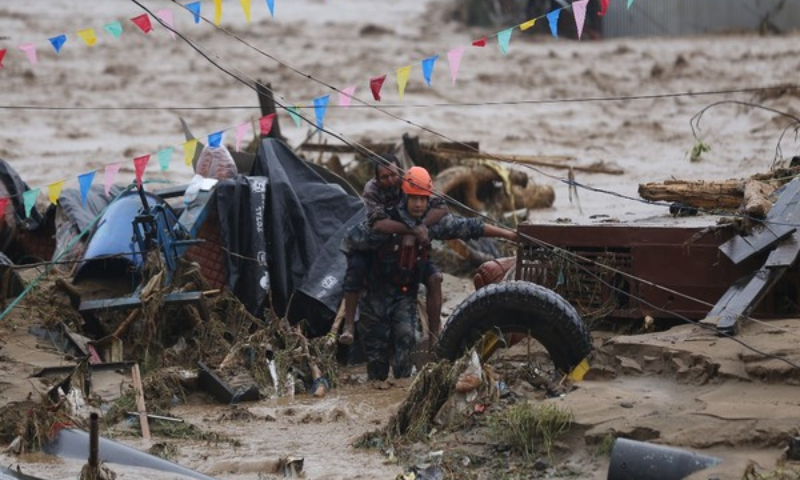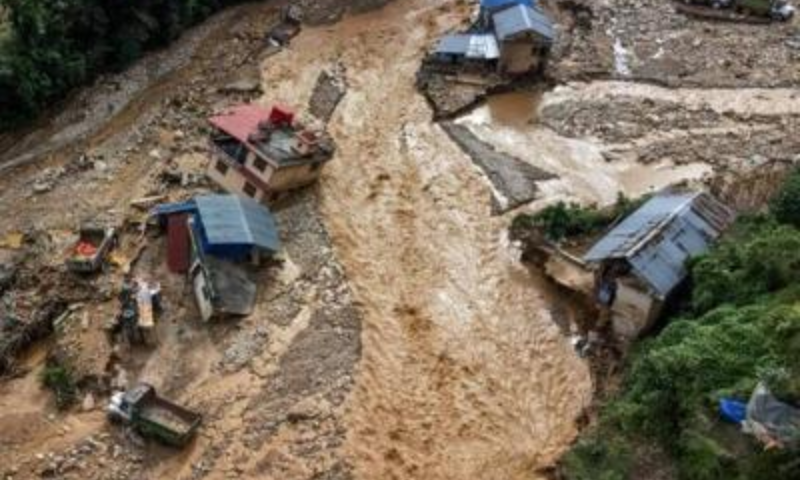KAVRE: Survivors of the recent monsoon floods in Nepal, which left at least 218 people dead, expressed their frustration with the government’s inadequate relief efforts on Tuesday.
Deadly floods and landslides are a recurring issue in South Asia during the monsoon season from June to September, but experts warn that climate change is exacerbating these disasters.
Entire neighborhoods in the capital, Kathmandu, were inundated over the weekend, and remote villages in the Himalayan region are still waiting for assistance. Mira KC, a resident of a village in the Kavre district east of Kathmandu, lamented, “There is no road, so no one has come. Even if they do, those who died are dead already, and the damage is done. All they will do is offer condolences; what will they accomplish?”
The floods heavily impacted Kathmandu’s poorest residents, particularly those living in precarious slums along the banks of the Bagmati River and its tributaries.
Man Kumar Rana Magar, 49, a slum resident, noted that while authorities provided temporary shelter at a school after his home was flooded, they were forced to leave before they were ready when classes resumed. “We are so close to the seat of the government. If they cannot take care of the poor this close, what will they do for others?” he questioned.
According to Nepal’s home ministry, at least 218 people have died, with another 27 still missing, while over 4,000 have been rescued. The country’s weather bureau reported that 240 millimeters (9.4 inches) of rain fell within 24 hours leading up to Saturday morning, marking the largest single-day rainfall in over two decades.
READ ALSO: Erdogan Calls for UN to Recommend Use of Force Against Israel
Experts criticized the authorities for failing to adequately prepare for the disaster despite warnings of intense storms. Arun Bhakta Shrestha, a climate expert at the International Center for Integrated Mountain Development in Kathmandu, stated, “Precautions that should have been taken were ignored.”
Nepali disaster management expert Man Bahadur Thapa emphasized that gaps in coordination and resources impeded rescue efforts, saying, “We could have saved many more lives if we had better preparation and capacity for our responders.”
Home ministry spokesman Rishi Ram Tiwari defended the government’s response, stating that authorities had been “working relentlessly since the disaster began, with all our resources at work.” Monsoon rains cause widespread devastation across South Asia every year, with climate change worsening their frequency and intensity. This year alone, over 300 people have died in rain-related disasters in Nepal.
























